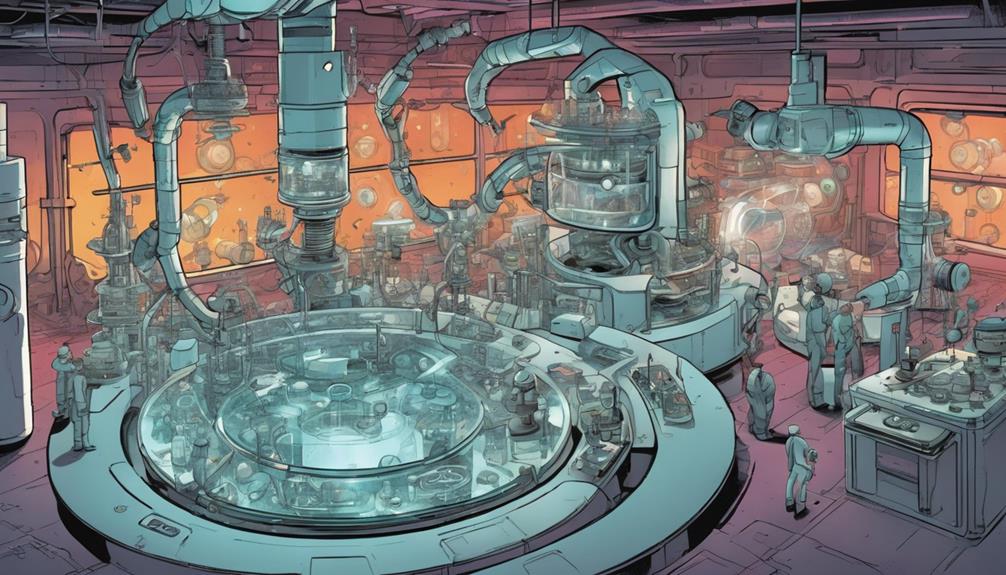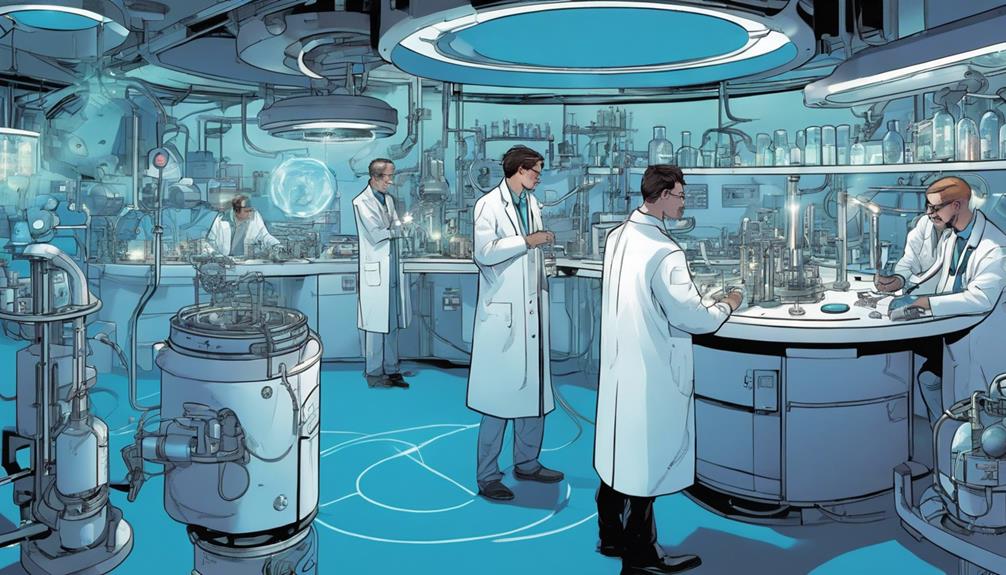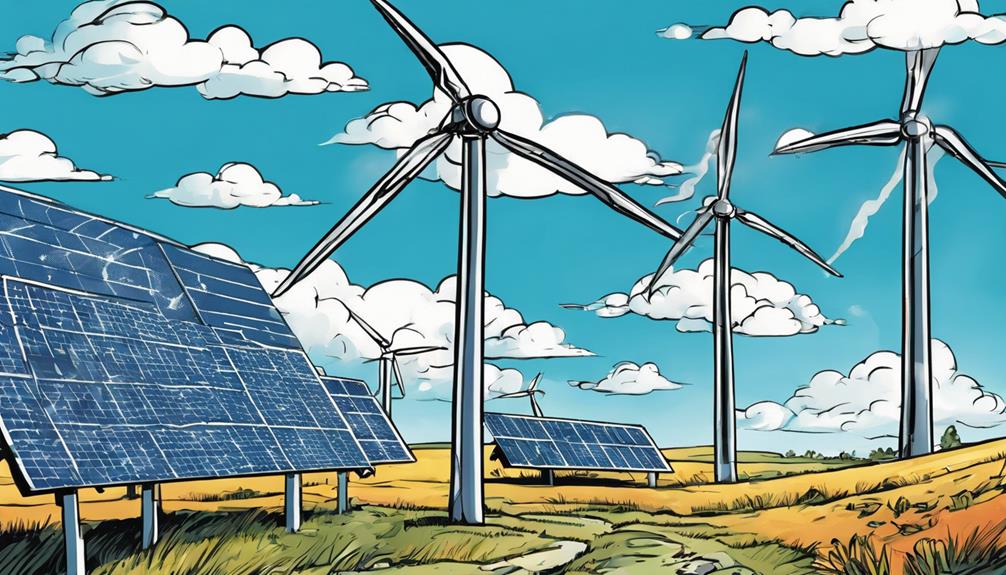We're transforming the fuel cell recycling industry by harnessing the power of innovation to recover valuable resources from waste streams, reduce emissions, and promote a circular economy. Our H2RENEW system recovers up to 75% of hydrogen from industrial waste streams, reducing operating costs and emissions notably. By leveraging electrochemical technology and proprietary control design, we're making fuel cell recycling more efficient and sustainable. As we continue to push the boundaries of fuel cell technology, we're getting closer to a future where fuel cells are efficient, eco-friendly, and accessible to all – and there's more to come.
Key Takeaways
- H2RENEW system recovers up to 75% of hydrogen from industrial waste streams, reducing operating costs and emissions significantly.
- Electrochemical technology harnesses up to 75% of hydrogen from waste streams, contributing to a circular economy and minimizing pollution.
- Petrochemical waste streams are repurposed to sustain hydrogen supply for fuel cell recycling, reducing reliance on external sources.
- Innovations in fuel cell technology, such as Daesan hydrogen fuel cells, can produce 400,000 megawatt-hours annually, promoting sustainable practices.
- Collaboration with industry leaders like Toyota and BMW aims to increase adoption and reduce costs in fuel cell technology, creating a circular economy.
Advancing Hydrogen Fuel Cell Recycling

As we explore the domain of fuel cell recycling, a critical component of a sustainable energy future, we're witnessing a breakthrough with the H2RENEW system, which is capable of recovering up to 75% of hydrogen from industrial waste streams.
This innovative approach utilizes an electrochemical method to extract hydrogen, reducing operating costs and emissions significantly. The system's proprietary control design and modular architecture enable top performance, scalability, and flexibility.
Recovering Hydrogen From Waste Streams

We're harnessing the power of electrochemical technology to recover up to 75% of hydrogen from industrial waste streams, a breakthrough that's poised to transform the fuel cell recycling landscape. Our exclusive control design ensures peak performance and maximum hydrogen recovery, making it possible to meet large-scale requirements through the deployment of multiple units.
This innovative approach not only reduces operating costs and emissions but also contributes to a circular economy by minimizing pollution and waste. By tapping into these industrial waste streams, we're accessing a valuable resource that can be reused to power fuel cells, reducing our reliance on external hydrogen sources and promoting sustainable practices in the process.
Role of Microfilters in Fuel Cells

TEXT:
The first step in creating a successful marketing campaign is to define your target audience. This involves researching and understanding the demographics, preferences, and behaviors of your ideal customers. Once you have a clear picture of who your target audience is, you can tailor your messaging and strategies to effectively reach and engage them. Understanding your audience is crucial for crafting compelling marketing messages that resonate with them and drive desired actions. In addition to demographics, consider psychographic factors such as values, interests, and lifestyles that may influence how your audience perceives and responds to your marketing efforts. Conducting market research and gathering data on your target audience will help you create more personalized and effective marketing campaigns. It is also important to regularly review and analyze the performance of your campaigns to identify areas for improvement and refine your strategies for better results. Keep track of key metrics such as conversion rates, click-through rates, and return on investment to measure the success of your marketing efforts and make data-driven decisions. Remember that successful marketing campaigns are not just about reaching a large audience but about connecting with the right audience in a meaningful way. By understanding your target audience and continuously optimizing your campaigns, you can increase engagement, drive conversions, and achieve your marketing goals.
Petrochemical Manufacturing's Key Role

Petrochemical manufacturing serves as an essential source of industrial waste streams rich in hydrogen, which are then leveraged as a valuable resource for hydrogen recovery in fuel cell recycling.
We're talking about waste that would otherwise be discarded, but instead, it's repurposed to sustain the supply of hydrogen for fuel cell recycling. This approach reduces our reliance on external hydrogen sources, promoting sustainable practices in the industry.
Innovations in Fuel Cell Technology

As we harness the potential of petrochemical manufacturing's waste streams, we're now pushing the boundaries of fuel cell technology itself, exploring cutting-edge innovations that will further propel the industry towards a sustainable future.
We're seeing significant advancements in fuel cell design, particularly with the Daesan hydrogen fuel cells, which can produce up to 400,000 megawatt-hours of electricity annually using recycled hydrogen.
Moreover, our collaboration with industry leaders like Toyota and BMW is driving progress in fuel cell technology, aiming to increase adoption and reduce costs. These developments are essential in creating a circular economy, where fuel cells aren't only efficient but also environmentally friendly.
Frequently Asked Questions
How Does the H2RENEW System's Modular Design Facilitate Scalability?
We designed the H2RENEW system with a modular approach, allowing us to easily scale up or down to meet large-scale requirements, making it flexible and adaptable to various industrial waste stream scenarios.
What Is the Average Lifespan of a Fuel Cell in a Recycling Facility?
We've found that the average lifespan of a fuel cell in a recycling facility is around 5-7 years, depending on usage and maintenance, with proper care and microfilter maintenance, we can extend it up to 10 years.
Can Fuel Cell Recycling Facilities Operate Independently of the Grid?
We've seen it firsthand – our Daesan facility produces 400,000 megawatt-hours of electricity annually using recycled hydrogen, showcasing our ability to operate independently of the grid, thanks to our innovative fuel cell recycling technology.
Are There Any Plans to Implement H2RENEW in Residential Areas?
'We're exploring opportunities to bring H2RENEW to residential areas, but it's still in the development phase. We need to make sure the technology is scalable and cost-effective for widespread adoption.'
What Is the Projected Cost Reduction for Industries Adopting H2renew?
"We're witnessing a watershed moment in waste stream wizardry, as H2RENEW's hydrogen recovery system slashes operating costs by up to 50% for industries adopting this innovative tech, translating to significant savings and a reduced carbon footprint."
How Does Fuel Cell Recycling Revolutionize the Efficiency of Hydrogen Fuel Cells?
Fuel cell recycling is an integral part of making hydrogen fuel cells outperform batteries. By reusing materials from old or damaged cells, we reduce production costs and environmental impact. This practice revolutionizes the efficiency and sustainability of hydrogen fuel cells, making them a more viable energy storage solution.
Conclusion
As we continue to push the boundaries of fuel cell recycling, we're proud to say that our H2RENEW system has already recovered over 100,000 kilograms of hydrogen from industrial waste streams.
That's equivalent to powering over 1,000 fuel cell vehicles for a year.
We're committed to driving sustainable innovation, and with our electrochemical approach, the future of fuel cell recycling looks brighter than ever.










